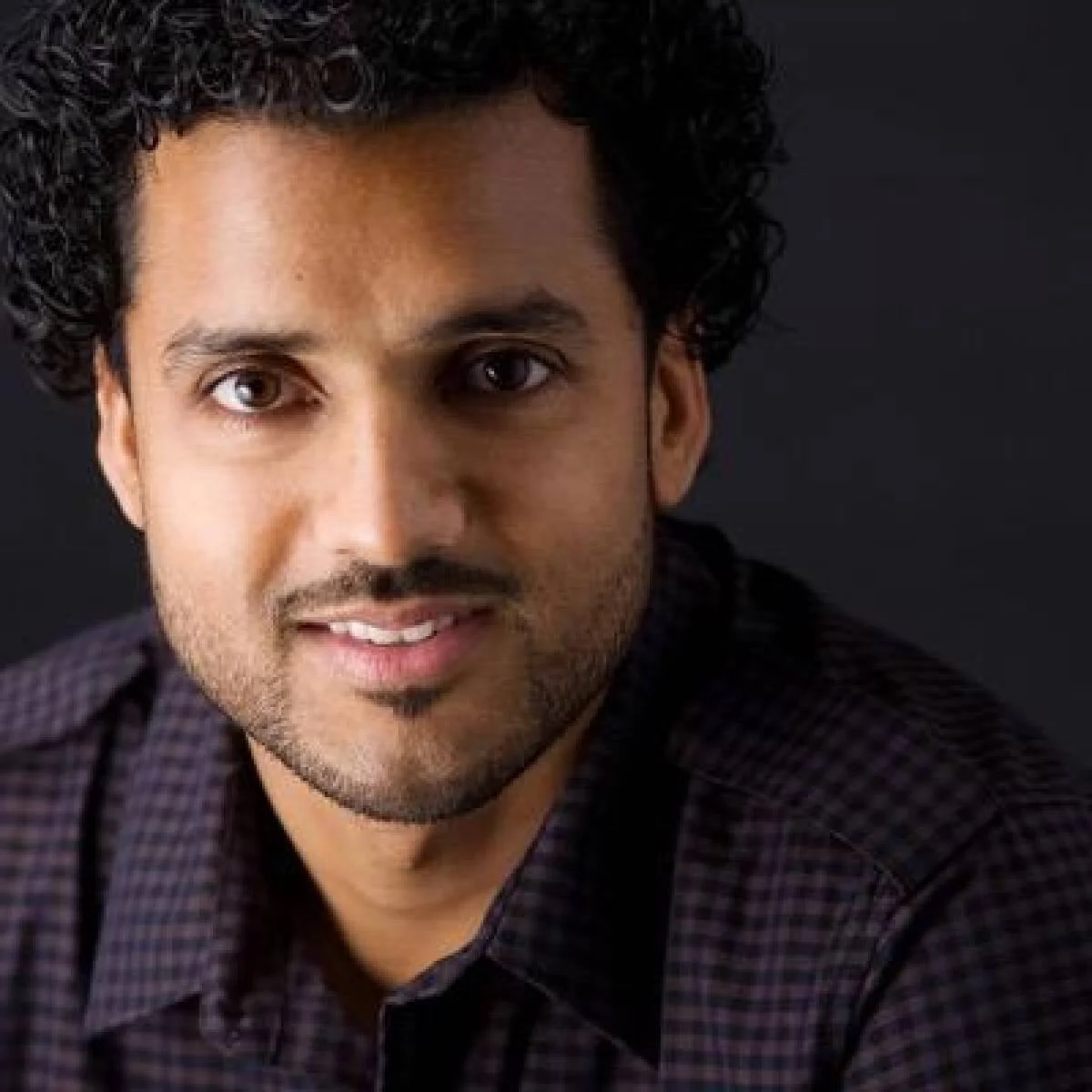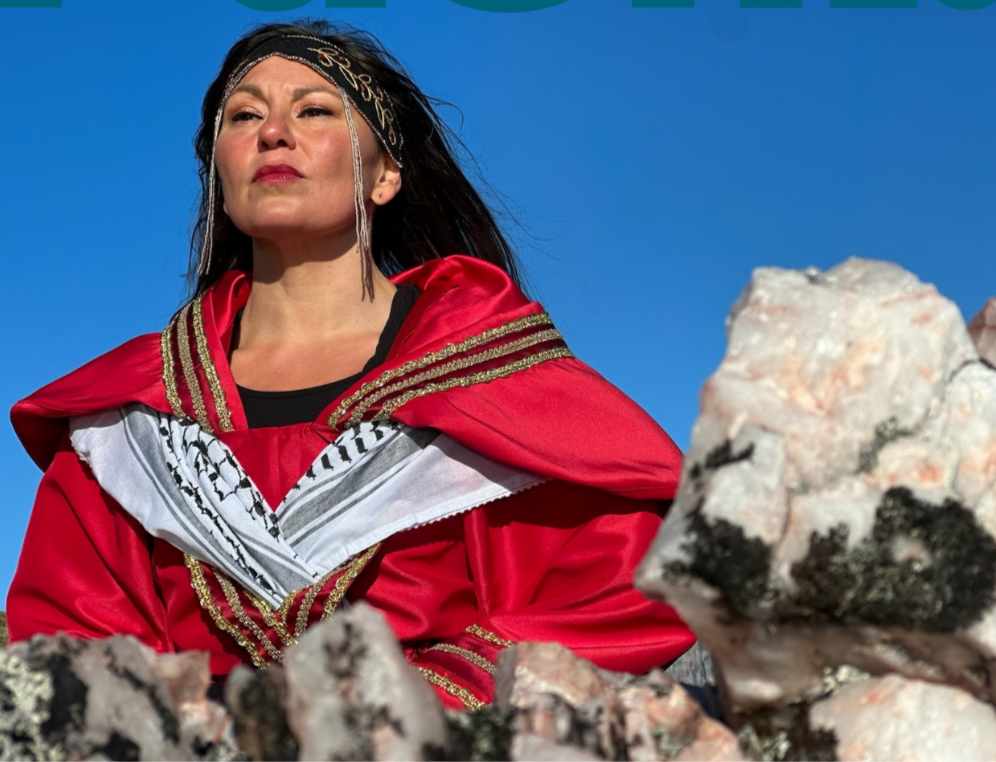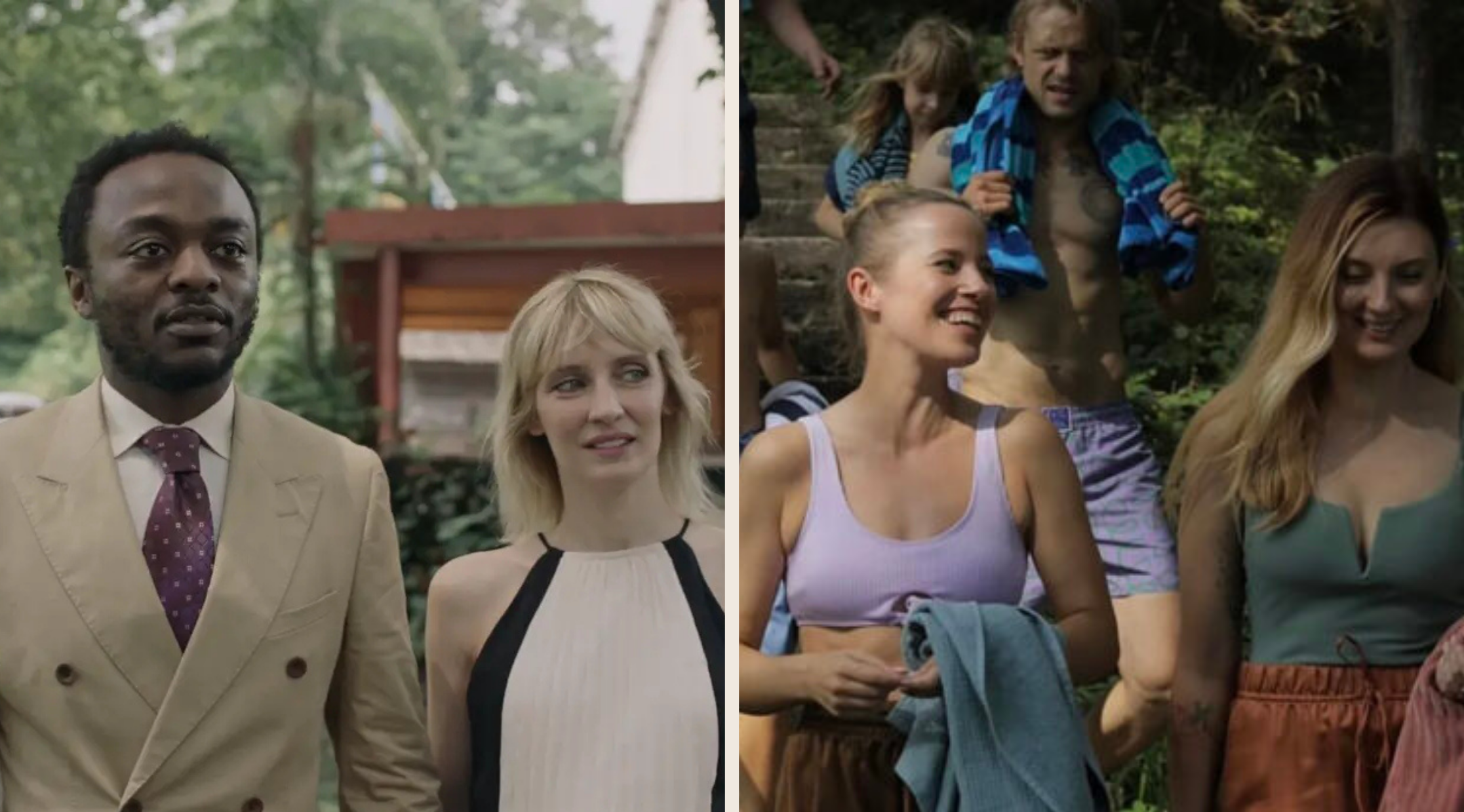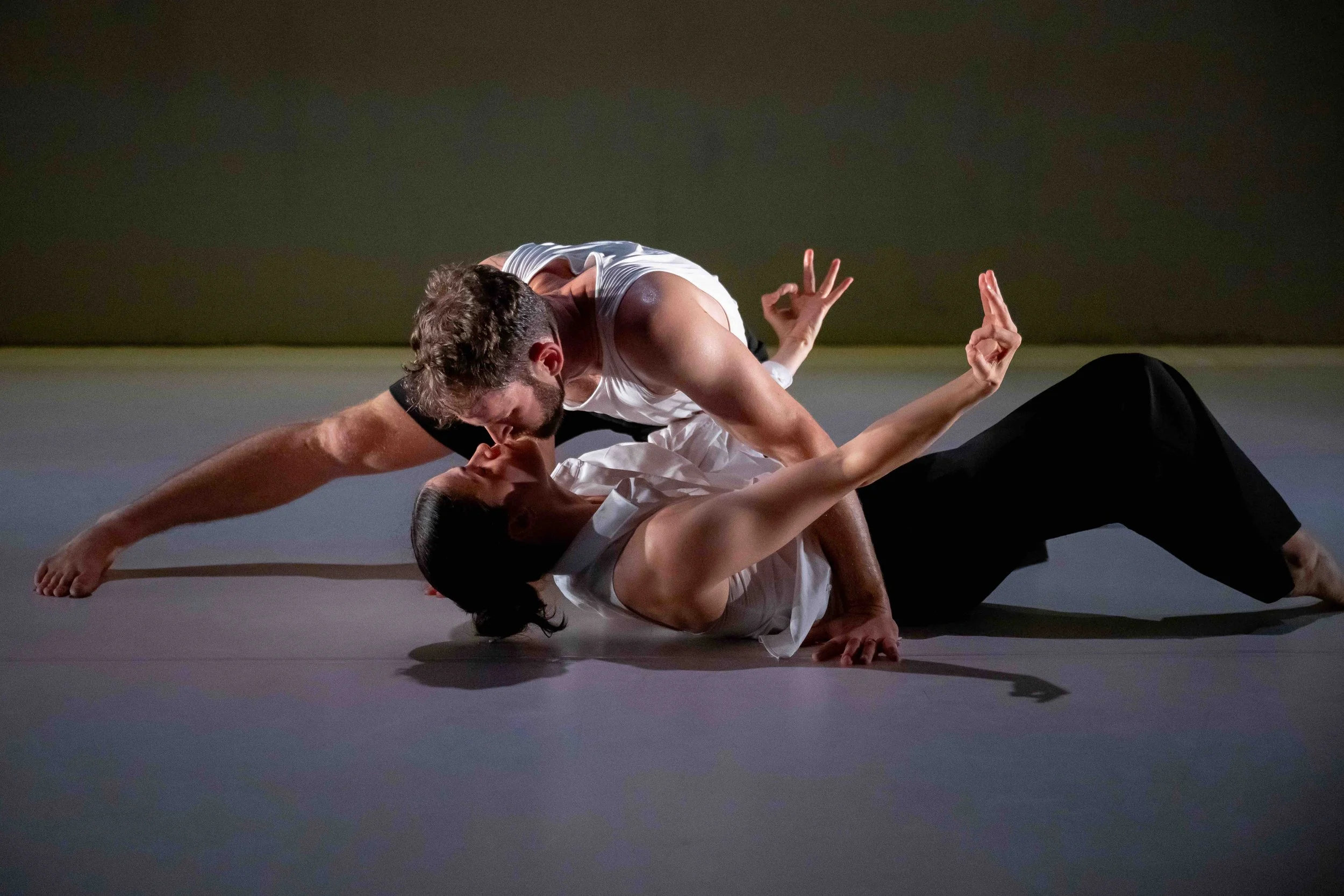Vancouver's Monsoon Festival of Performing Arts celebrates South Asian culture
Through music, dance, visual art, a marketplace, workshops, murals, and more, diverse artists proudly share their heritage
Performing artist-choreographer Krystal Kiran is among the South Asian artists participating in Monsoon Festival of Performing Arts. Photo by Sid Ghosh Photography
WHEN FIERCE RAIN pounds the pavement in Vancouver, people half-jokingly call it a monsoon. In India, the welcoming of the awe-inspiring and spiritual force of the monsoon is a tradition that goes back centuries.
Ever since 2016, Vancouver’s Monsoon Festival of Performing Arts has been celebrating the intersection of these natural phenomena through music, dance, visual art, and more by diverse South Asian artists.
This year, the festival unfolds online from August 1 to 31, with everything from bhangra classes and artistic workshops to music and dance performances—all free. Murals in the Market takes place live in Vancouver’s Punjabi Market. While showcasing so much talent, the festival is a way for South Asian artists to share their heritage; it’s all about connecting cultures.
Stir connected with several of the artists participating in the 2021 event to hear about their familial roots, their work, and what the Monsoon Festival means to them in their own words.
ishQ Bector.
ishQ Bector
Workshop Wednesdays: Music Review & Release Strategies with IshQ Bector, August 4
I was born and raised in Winnipeg, Manitoba but my parents are from Punjab.
I'm a music composer/producer/director/artist who has been working in Indian music and television since the early 2000's. Though I’m lucky enough to work with projects in various genres, my first love is hip hop.
The Monsoon Festival is about artists building a communal network for us to understand and support each other in the ever-shifting landscape of artistry.
Ruby Singh.
Ruby Singh
Workshop Wednesdays: The Score: Sound Design & Composition for Theatre & Film with Ruby Singh, August 11
I am the first of my family born on Turtle Island. My family emigrated from Punjab, India.
I am an interdisciplinary artist; my work crosses the boundaries of music, poetry, visual art, photography, and film. My expressions engage with mythos, memory, identity, justice, and fantasy. Currently I am working on the Polyphonic Garden, an audio-visual suite which examines a cyclical understanding of time and explores our relationship with ourselves, each other, and the more than human world. Rejuvenating a sense of wonder for the natural world and how we might be able to move into right relations with the lands, waters, and sky that nurture us.
The Monsoon Festival creates an important platform that allows the voices of south Asian artists to experiment, be witnessed, and to cross pollinate. It’s a much-needed space that decentres white supremacy’s grip on the arts.
Jas Nagra.
Jag Nagra
Monsoon Marketplace, August 1 to 31
My family comes from Punjab, India, and my parents emigrated to the Vancouver-area in the mid-’70s and early ’80s.
I focus my art practice on themes inspired by the South Asian and queer intersections of my identity—hand-drawn art with bright colours and strong lines, featuring strength and boldness. I celebrate women-empowerment and darker skin tones… Something that’s not often seen in mainstream art.
Being included in Monsoon Festival is a huge highlight for me. I’m honoured to be among incredibly talented artists. And it’s inspiring to see that even through the pandemic, with the festival being digital for the second year in a row, it still brings community and the arts together. It’s beautiful.
Krystal Kiran.
Krystal Kiran
Sunday Funday: Song & Dance with Krystal Kiran, August 22
Both of my parents are Punjabi-Sikh immigrants from India. That said, my mom moved to the Okanagan from her village in Punjab when she was nine years old, and my dad grew up in Kolkata.
Teaching is central to my work as an artist. It is what keeps me grounded and in community. My artistic practice is best described as multi-disciplinary and an extension of my identity as a “third culture kid”, meaning that I was born and raised in a country that isn’t that of my family of origin, and when I go back to our home country, we are considered “foreigners”. I used to feel conflict around this, but my body of work, particularly in the cannon of western musical theatre with classical Indian training in both voice and dance, continually helps me reconcile these aspects of identity that have often times felt at odds with one another. As I continue along this journey, I am also paying attention to what it means to practise these forms of art, performance, and education as a settler on unceded First Nations lands.
The Monsoon Festival for me is an incubator of South Asian talent, creating a space and place for multi-disciplinary artists to share their art and teachings. It’s important for this space to exist and I’m grateful to be part of it.
Jas Lally.
Jas Lally
Monsoon Talks—Artist Panel Discussion guest curator, August 22; Murals in the Market guest curator (murals are scheduled for completion by August 10)
My familial roots are from Punjab.
My work is to support emerging artists in B.C. With the curation of the mural festival, I was able to provide a platform for four South Asian artists to express their artistic style in a neighbourhood they had a connection with.
The Monsoon Festival to me is a place where the South Asian performing and visual artists community can come together and learn and express their culture.
Minahil Bukhari (left) and Mustaali Raj.
Mustaali Raj and Minahil Bukhari
Murals in the Market
Mustaali: My family is originally from Rajasthan, India. I was actually born in Delhi, but moved to Canada at a very early age.
My multi-faceted sense of belonging and experiences plays an important role in exploring intersections of identity through my design. My work is deeply rooted into conceptual thinking that seeks reimagining symbols to make them relevant to the visual vocabulary of today. I work with graphic design, pattern making, bilingual type design and motion based on this underlying concept. I often focus on projecting a more inclusive and holistic view of Canada’s diverse framework through client projects, personal initiatives and community activations.
Minahil: I’m originally from Lahore, Pakistan, but my ancestry is quite diverse. It traces back to Arabia, through Uzbekistan, Iran and Iraq.
As an interdisciplinary fine artist, I work with installation art, sound, video, sculpture, and painting. My artworks are poetic gestures that enable a sense-feeling about topics which cannot be fully approached, comprehended or described within the capacity of language. Mustaali and I often collaborate together on projects bringing diverse perspectives from our respective fields.
Mustaali and Minahil: The Monsoon Festival is a celebration of South Asian artists, culture and creativity framed within a contemporary context. It is a refreshing opportunity to connect with like-minded creatives but also a source of inspiration for aspiring creatives. It is a much-needed movement that advocates and promotes creative endeavours, collaborations and relationships within our respective communities. Just like the monsoons nurture the natural environment of South Asia, the Monsoon Festival nurtures the creative environment for us here in Canada.
Gurpreet Sian.
Gurpreet Sian
South Asian Arts Society executive director and Monsoon Festival producer
My parents were born and raised in Punjab and moved to Canada in the 1970s. I was born in Kamloops, BC and spent the first 17 years of my life in Clearwater, B.C. before moving to Vancouver in 1996 to pursue my post-secondary studies. I've lived in South Vancouver since then.
My background is primarily in dance and music, specifically bhanrgra dance and dhol drumming. I don't claim to be the best at either, but I do pride myself in my ability to teach complete beginners how to dance and play music. I don’t perform as much these days, but rather focus more on teaching and producing events, whether it's the Monsoon Festival or other standalone presentations by South Asian Arts Society, where I am the Executive Director.
The Monsoon Festival is my baby—hahaha! Well, one of them at least. As a co-creator and producer of the festival, it is very near and dear to my heart. Personally, it is a way for me to utilize the relationships I’ve made over the years and put the lessons I've learned to good use, so that other artists have a better opportunity to learn and hopefully pursue their ambitions as actors, writers, directors, musicians, dancers, and art makers of all sorts. It is a platform that exists to elevate South Asian artists and art forms.
Jasminder Raj (left) and Des Raj.
Des Raj
Monsoon Music Night, August 15
My father, the late Ustad Garib Dass, was from Pakistan. After the partition in 1947, his family moved to the Punjab side of the border and eventually settled in a village called Sialba Majri. He was around seven years old at that time. When my father got older, he would walk about 25 kilometres from Majri to the city of Chandigarh to play and teach dhol drumming. Eventually, my family moved to Chandigarh, and that is where I was born.
My family comes from a long lineage of musicians and artists. My father was a key artist in the development of the dhol tradition and Punjabi folk music and dance in India. He taught me everything I know.
I started playing the dhol in 1986 and while living in Punjab, I played dhol with Bhangra teams at DAV College, Khalsa College, and Punjab University. During the hot summer months, I would travel around the world and accompany Punjab’s most popular singers on their tours.
My playing style is more folk than classical. It is related to the Punjabi culture, which is our identity. Playing dhol with bhangra dance teams is a very different experience. There are so many different rhythms or taals that you have to know how to play. The dhol player is often the one who ends up making the dance set because they have spent so much time with bhangra, they know all the movements and how to transition between them with the proper breaks.
I believe in playing the dhol with sweetness and with love, rather than just beating it as hard as you can with all your strength.
This is my first year working with the Monsoon Festival, but I have known Gurpreet for many years. I want to thank Gurpreet and the festival for giving me this opportunity. I have always wanted to collaborate with musicians from other parts of the world. I hope I get to work with them again in the future.
Jaswinder Raj
Monsoon Music Night, August 15
I was born in Chandigarh and I recently moved to Surrey in 2019.
As a child, I was fortunate to have the best instructors: My father, Des Raj, and my grandfather, Ustad Garib Dass. I picked up my first instrument at a very young age. Like my dad, I am trained primarily in the folk style of playing, but I have also learned some classical forms as well. Aside from playing dhol, I also play other instruments like the dholak, tabla, and bugchu.
This is my first year working with the Monsoon Festival. I am excited to play with my dad and with musicians from around the world. I want to thank the Monsoon Festival and Gurpreet for giving me this opportunity.
Sandeep Johal.
Sandeep Johal
My parents immigrated from Punjab, India in the early 1970s and settled in Kelowna, BC. I was born and raised there.
I use my Indo-folk-feminine aesthetic in a variety of mediums—drawing, large-scale painting, textiles—to confront complex topics ranging from femicide to motherhood. Story-telling is at the center of my practice.
Monsoon Festival empowers South Asian creatives like myself to live an art-centered life while offering support and connection.
For more information, see Monsoon Festival of Performing Arts.






















